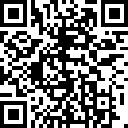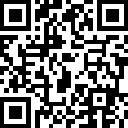2025 RMB to USD Exchange Rate: Trend Analysis and Investment Guide
Since the beginning of 2025, the RMB to USD exchange rate has seen a positive start. In January, the RMB spot exchange rate appreciated by 0.46%, reflecting market confidence in the resilience of the Chinese economy. However, with the impact of US policy adjustments and global market volatility, bidirectional fluctuations have become increasingly evident. For novice investors, understanding the drivers of exchange rates and mastering basic trading strategies are key to rationally planning forex investments. This article will analyze the situation from policy, market, and practical perspectives to help you seize market opportunities.
1.Current Status and Core Drivers of the RMB to USD Exchange Rate in 2025
Recent Exchange Rate Performance
In January 2025, the RMB to USD spot exchange rate adjusted from 7.2988 to 7.2650, appreciating by approximately 338 points, with the central parity rate showing a steady upward trend. This movement reflects market confidence in China’s economic fundamentals and the central bank’s signals to stabilize the exchange rate.

Short-Term Factors Affecting Exchange Rate Fluctuations
In the short term, exchange rate fluctuations are primarily influenced by the following factors:
- Federal Reserve Policy Adjustments: Uncertainty surrounding U.S. policies triggers market, leading to short-term exchange rate volatility.
- S.-China Trade Friction Expectations: Uncertainty in trade negotiations further exacerbates market sentiment.
- Central Bank Stabilization Tools: In January, the central bank successfully signaled market confidence through measures such as offshore central bank bill issuance and adjustments to cross-border financing parameters.
Key Influencing Factors Analysis
U.S. Policy Uncertainty
Current U.S. policy adjustments, particularly discussions surrounding the Trump administration’s proposed tariff increases, have driven the market toward safe-haven assets in the short term. However, inflationary pressures may undermine the effectiveness of these policies.
China’s Economic Resilience
China has a buffer of approximately $123.9 billion in unsettled foreign exchange funds, coupled with strong domestic demand policies, providing a solid “safety cushion” for the RMB and demonstrating significant resilience amid market volatility.
Central Bank’s Toolkit
Through tools like the counter-cyclical adjustment factor and offshore market interventions, the central bank has continuously enhanced the RMB’s ability to withstand external pressures, further stabilizing market confidence.
Historically, after Trump took office, initial RMB depreciation due to trade policy uncertainty was followed by a period of significant volatility. This phenomenon highlights the profound impact of political and trade policies on exchange rates. The market trends in 2025 incorporate more complex factors, presenting new characteristics.
Strategies and Tools for Beginners Investing in RMB to USD Exchange Rate
Basic Trading Logic
For beginners entering the forex market, understanding and mastering basic trading logic is crucial, encompassing directional trading and risk hedging.
Directional Trading
- Fundamental and Policy Analysis: Directional trading focuses on predicting market trends based on economic data and policy movements. Investors should closely track key economic indicators such as GDP, employment figures, and consumer confidence indices in both the U.S. and China, alongside central bank policy statements and interest rate decisions. For instance, if U.S. inflationary pressures subside or Chinese economic data surpasses expectations, the market often anticipates RMB appreciation, making long positions on RMB against USD a strategic consideration.
- Technical Analysis Assistance: Combining technical analysis tools such as trend lines, support, and resistance levels can help confirm entry and exit points, further improving the accuracy of trading decisions.
Risk Hedging
- Using Derivative Instruments: Market volatility often accompanies uncertain risks. Beginners can use forex derivatives such as forward contracts and options to lock in future exchange rates, thereby reducing the risk of losses due to severe market fluctuations.
- Strategy Adjustment and Cost Control: Maintaining an optimal hedging ratio is essential, as both excessively high and low ratios can impact hedging effectiveness. Investors should also continuously monitor transaction fees and other hidden costs while dynamically adjusting hedging strategies in response to market fluctuations to ensure portfolio stability.
By integrating directional trading with risk hedging strategies, beginner investors can capitalize on market opportunities while effectively mitigating risks, allowing for steady progress in the dynamic forex market.
Practical Steps and Platform Selection
1.Opening a Trading Account and Depositing Funds
After grasping the fundamental trading logic of the RMB to USD exchange rate market, you can trade the RMB/USD currency pair through forex margin contracts for difference (CFDs). This trading method offers distinct advantages, including a low capital threshold, flexible two-way trading, and the ability to capitalize on market opportunities in any direction. Moreover, the account opening process is seamless, with most platforms supporting online registration, enabling investors to enter the market quickly. These benefits make forex margin trading an attractive option for investors looking to maximize capital efficiency.
Investors need to follow these steps to officially enter the market:
- Account Registration: First, quickly register and open a trading account on the Ultima Markets platform.
- Identity Verification: Submit identification documents (e.g., passport, driver’s license).
- Deposit Funds: Deposit funds via bank transfer, credit card, or e-wallet, with a minimum deposit threshold typically as low as $50, suitable for beginners to test the market.
These steps can all be completed online, with Ultima Markets offering a fast review mechanism to ensure investors can quickly enter the market and start trading the RMB to USD exchange rate.
Ultima Markets, a well-known forex trading platform regulated by international authorities such as CySEC and ASIC, offers trading in over 60 currency pairs, including the RMB to USD exchange rate, with advantages such as low spreads, zero commission, and leverage up to 1:2000, suitable for both beginners and professional traders.
2.Familiarizing with the Trading Platform and Demo Trading
For investors new to the forex market, it is advisable to start withUltima Markets’ free demo account to gain hands-on experience with the trading environment and market fluctuations. The key benefits of demo trading include:
- Mastering the Trading Interface: Get accustomed to essential functions such as opening and closing positions, setting stop-loss and take-profit levels.
- Testing Trading Strategies: Apply technical and fundamental analysis to validate the effectiveness of different trading strategies.
- Risk-Free Practical Experience: Simulate real market conditions without financial risk, helping investors accumulate trading experience.
For instance, Ultima Markets provides a free demo account, enabling traders to engage in simulated forex margin trading under real market conditions. This prepares them for live trading in the RMB to USD exchange rate market.
3.Developing a Trading Strategy and Risk Management Plan
Key Elements of a Successful Forex Trading Strategy
Profitable forex trading requires not only accurate market predictions but also well-structured trading strategies and effective risk management. The essential components include:
- Selecting a Trading Style: Short-term trading (Scalping) and day trading (Day Trading) work well for volatile currency pairs like RMB/USD, while swing trading (Swing Trading) is better suited for stable trends.
- Prudent Use of Leverage: High leverage can amplify returns but also increases risk. Beginners should start with lower leverage (e.g., 1:10 to 1:30) and maintain strict position control.
- Setting Stop-Loss and Take-Profit Levels: Establishing well-defined stop-loss and take-profit points is crucial to prevent excessive losses from sudden market fluctuations. In RMB/USD trading, an optimal risk-reward ratio (e.g., 1:2) can be determined based on key support and resistance levels.
- Adapting to Market Conditions: Utilize breakout trading (Breakout Trading) during high-volatility periods and trend-following strategies (Trend Following) in low-volatility environments to ensure trading flexibility.
By implementing these strategies, traders can enhance their ability to navigate the forex market efficiently and mitigate potential risks.
Risk Management and Long-Term Perspective in Exchange Rate Fluctuations
In the forex market, fluctuations in the RMB to USD exchange rate are driven by multiple factors. To enhance investment stability, investors must implement effective risk management strategies by balancing short-term market dynamics with long-term trend outlooks. This approach enables them to navigate volatility while maintaining a structured trading plan.
Short-Term Market Focus Points
In the current volatile market environment, short-term factors affecting the RMB to USD exchange rate mainly include:
- Federal Reserve Interest Rate Decisions: Market expectations vs. actual outcomes of Fed rate decisions often trigger sharp forex market fluctuations. If the Fed signals further rate cuts, the USD may weaken, boosting RMB appreciation. Conversely, a hawkish stance could strengthen the USD, pressuring the RMB.
- S.-China Trade Negotiations: Shifts in trade relations directly impact market sentiment and capital flows. Smooth negotiations generally support the RMB, while escalating tensions increase risk aversion, driving USD demand and weakening the RMB exchange rate.
- Policy Statements from the Chinese Central Bank: Adjustments in the People’s Bank of China’s monetary policy—such as reserve requirement ratio cuts, forex management relaxations, or capital control measures—shape market expectations. For instance, increased liquidity injections and stable exchange rate policies may alleviate RMB depreciation pressures, attracting international capital inflows.
- Technical Support and Resistance Levels: Key levels like the 7.17 exchange rate midpoint serve as crucial support or resistance zones. Traders use technical indicators such as moving averages, Bollinger Bands, and the Relative Strength Index (RSI) to assess short-term trends and adjust their strategies accordingly.
Long-Term Trend Outlook
1.Factors Pressuring the USD
- Rising U.S. Debt Levels: The continuous expansion of U.S. government debt may erode market confidence in the USD, reducing its appeal as a global reserve currency.
- Federal Reserve Rate Cut Expectations: If the Fed sustains a prolonged low-interest-rate policy, USD returns may decline, prompting international investors to shift toward RMB-denominated assets, fueling RMB appreciation momentum.
2.RMB Internationalization Process
- Facilitation of Cross-Border Settlements: China is accelerating the RMB’s role as an international trade settlement currency, including the expansion of digital RMB (e-CNY)applications, which enhances global market adoption and strengthens the RMB’s position in global finance.
- Development of Offshore Markets: The expansion of RMB offshore markets in places like Hong Kong and Singapore makes RMB trading more flexible, enhancing its international currency status.
- Impact of the “Belt and Road” Initiative: Strengthened economic and trade cooperation between China and emerging market countries has increased the RMB’s usage in the global payment system.
Application of Risk Management Tools
In a highly volatile market environment, the rational use of risk management tools is crucial for investors. For example, the Ultima Markets trading platform offers various risk control tools to help investors reduce losses caused by market uncertainty:
- Real-Time Market Analysis & Alert Systems: Providing real-time market data and trend analysis enables traders to capture key movements in the RMB to USD exchange rate.
- Stop-Loss & Limit Orders: Setting stop-loss orders ensures automatic position closureduring extreme market fluctuations, preventing excessive losses. Meanwhile, limit orders allow investors to enter the market at optimal prices, minimizing risks caused by sudden volatility.
- Market Depth & Liquidity Analysis: Depth data reveals buy/sell forcesin the market, helping traders make data-driven and strategic trading decisions.







![[MetaTrader 5 Mobile Trading Complete Guide] 7 Key Advantages for Real-Time Market Access](https://www.ultimamarkets.com/wp-content/uploads/2025/04/mt5_mobile_trading_card.jpg)
















